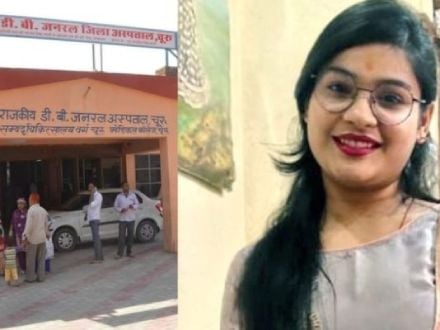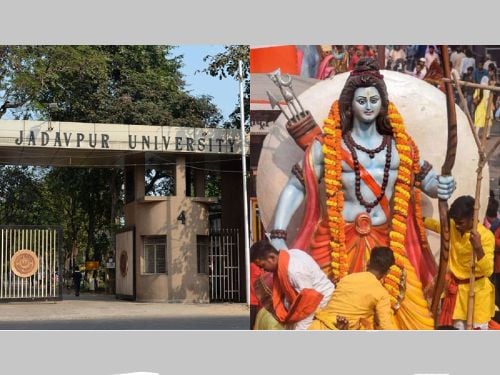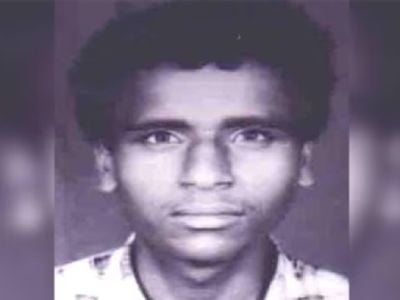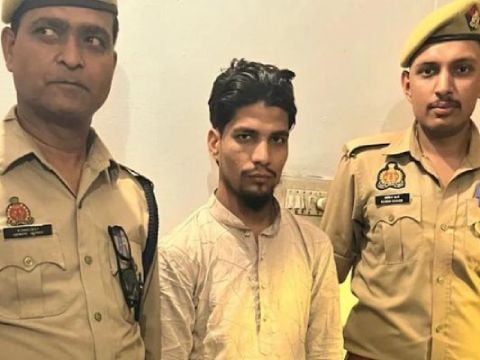1. Positive and negative impact of Hindi movies on society
Hindi movies have become an integral part of our life. They have influenced us for over 70 years, and people enjoy watching them. These movies entertain us. Some also impart knowledge and a good message to society. In the past religious movies and those on social issues have positively influenced the public mind, and they are treated as ideals today too. The excellent performance of the actors, closeness to reality and exciting direction of the director left a great impression on the audience. Filmmaking created a new environment and employed many artists. Great musicians, actors, writers, dancers, singers, instrumentalists, directors, costume designers, and cinematographers came to the fore. The advent of movies brought about many changes in our society. However, with the positive, many negative effects were also observed.
2. Glorification of pseudo-secularism and jihad in Hindi movies
The movies entertained the Indian public but gradually spread poison in our society. This poison also has some connection with jihad. In the past and currently, many actors and directors are from the Muslim community. Many people belonging to the same community are active in this field. Islam forbids dance, music, and acting, but its followers are operating in the industry with newer ones joining it. This industry has produced numerous movies with secularism as its focal point. A show of Hindu-Muslim brotherhood is put up while Jihadis are shown to be very gentle and full of humane qualities.
3. Hindi movies attempt to portray Hindus as oppressors and Pathans as beacons of humanity
As time passed, the Hindus and their religious practices were under-represented in the race to show brotherhood. The film industry has always hidden the genocide of Hindus after Partition. Not only was it hidden, but the jihadis were glorified. The Pathans who persecuted the Hindus were called the messiah of humanity. Hindu values were ignored. Attempts have always been made to portray Hindus as oppressors. Brahmins and Tilakdharis were shown to be anti-Dalit, Kshatriyas or Thakurs as tyrannical landlords and the Vaishya community as greedy, miserly and cunning. On the flip side movies set in a Muslim backdrop have glorified and presented Muslim characters favourably. During the partition, the Muslims inflicted tremendous atrocities on the Hindus. These atrocities had caused great outrage. In a conspiracy to downplay this outrage, movies tried to portray Muslims as civilised and ideal. Hindi movies from the era like ‘Pathan’, ‘Kabuliwala’ etc. are examples of this ploy.
4. Hindu artists who fled Pakistan at the time of partition made Mumbai their home
Numerous Muslim actors, directors, producers, composers, singers, cinematographers, etc. were a part of Hindi cinema. Initially, many Muslim actors adopted Hindu names and played Hindu characters very well. For a long time, people were under the impression that they were Hindus. After the partition, many Muslim artists went to Pakistan, while some remained in India. Many Hindu artists came from Pakistan and made Mumbai their home. These Hindu artists were mostly of Punjabi and Sindhi ethnicity. They had witnessed the horrors of partition but never let that pain show on the screen. Today the third generation of some of these artists is active in the industry, but they harbour a commercial outlook.
5. Muslim writers and lyricists in the film industry made Urdu the de facto language
From the 1940s, numerous movies about the Muslim community were filmed. A majority of the movies in Hindi cinema are about love and romance. Shayari, ghazal, qawwali, mushaira, taarana etc. were used abundantly to showcase these themes. Urdu was predominant in songs and dialogues. Urdu became the de facto language of Hindi movies in a planned manner. Muslim writers and lyricists used to insist that film songs were incomplete without the usage of Urdu, but Hindu lyricists managed to deconstruct this later.
6. Creation of false and fictional stories to glorify Muslim culture
Most of the screenwriters in the industry are Muslims which has only increased the usage of Urdu in movies. Even dance sequences are on songs which are majorly in Urdu. The Hindi film industry portrayed the indigenous Kathak as a dance performed by prostitutes in brothels. Muslim movie producers made movies centred around Muslim culture. These movies focussed on the Mughals and Nawabs and portrayed them in a very favourable light. These movies glorified the savage and oppressive Muslim culture. Most of the stories woven in these movies were false and imaginary.
Romantic movies including Laila-Majnu, Shireen-Farhad, Heer-Ranjha, Soni- Mahiwal, Mirza-Sahiban, Salim-Anarkali, Jehangir-Nur Jahan, Shah Jahan-Mumtaz were based on examples from Islamic lore. Most movies picturised with the Muslim culture as a backdrop showed a lack of reform, modernity and patriotism. Movies like Mirza Ghalib, Anarkali, Barsat Ki Raat, Mirza Sahiban, Heer-Ranjha, Soni-Mahiwal, Salim-Anarkali, Jehangir, Noor Jahan, Mere Mehboob, Bahu Begum, Hatimtai, Chaudhvin Ka Chand, Pakeeza, Henna, Umrao Jaan, Coolie, Taj Mahal, Alam Ara, Nek Parveen, Sanam Bewafa, etc. were famous movies which revolved around Muslim themes. There was no talk of advancement or reform anywhere in these movies. All of them revolve around a love story and glorify Muslim culture. Islamic customs were exaggerated in these movies. Nikah (marriage), Talaq (divorce), etc. were a part of the plot. But Halala, Iddat, and polygamy were never discussed in these movies.
Halala – This is a law that requires a divorced woman to marry and sleep with someone else before she can return to her former husband
Iddat – Iddat or Iddah is the period of ‘mourning’ that a Muslim widow or divorcée must follow before being allowed to remarry
7. Pakistani infiltration into the Hindi film industry since the 1970s
Since the 1970s, Hindi movies have seen a decline in Hindu values. One reason for this is political. This was the time when Pakistan was defeated, and Bangladesh was liberated. Pakistan had no hope of winning a confrontation with India. So it resorted to other means to harm India. This included terrorism, trafficking of arms, drugs, gold, silver, diamonds, gems etc., which gradually seeped into the Hindi film industry too.
8. Hindu gods ridiculed, Muslim superstitions promoted
This decade also saw the rise of Salim Khan and Javed Akhtar. In this decade, movies with modern themes came out alongside traditional topics. Songs influenced by foreign music started gaining popularity. Movies like Sholay and Deewar are from this decade. Movies in the decades that followed were on themes of the social reformation of Hindus and attacks on olden practices. There were also movies produced which mocked Hindu values. Comedic roles were with actors speaking in pure Hindi.
Movies like Sholay ridiculed Hindu Gods either directly or through dialogues. Superstitions about Pirs and Fakirs, Saibaba, number 786 (a holy number in Islam), Roza (fasting), and Namaaz started to be glorified. Hindu heroes also went to Christian priests for confessions. In the movie ‘Amar Akbar Anthony’, Kishanlal’s children became Muslims and Christians.
Thugs and gangs were picturised disguised as Hindu sadhus committing crimes like theft, smuggling etc. Criminals were depicted in Hindu symbols wearing red tilak, Shikha (tuft), malas, etc. Hindu Kshatriya characters were portrayed as violent and lustful. The Hindu merchant (Vaishyas) was portrayed as greedy, money-grabbing and evil. If anyone supported the secular hero who fought all these, it was a Pathanbhai or some Abdulchacha.
9. Understand ‘Bollywood Jihad’ and fight it
Socialism was used as a theme to show the tussle between owners and workers. During this period, the influence of Western civilization began to make its presence felt in movies. The ‘trend’ of scantily clad female artists and their vulgar dances started growing. Scantily-clad women were shown performing obscene dances in pubs, casinos, hotels etc. At the same time, Hindu girls were shown marrying men of other religions in the name of secularism. The era of spreading crime and obscenity in society started here. Dharmik movies dwindled. Their production stopped in the 1990s. The Babri demolition and the exodus of Hindus from Kashmir saw a change in film scripts. The movies became centred around anti-heroes. In the 1990s, 3 Muslim actors, Aamir Khan, Salman Khan and Shahrukh Khan emerged, who have maintained their influence for the past 35 years. After the murder of ‘T-Series’ owner Gulshan Kumar, the trend of religious songs like bhajans, aarti etc. in movies ended. The growing influence of the ‘Underworld’ began to be seen in Hindi filmmaking. Heroes with Hindu names were picturised as being completely secular. Today the situation is even worse. Terror funds are invested in movies, and the godless generation of Hindus is seen making a mockery of their own Dharma.
It is suspected that the Central Board of Film Certification (Censor Board) has been completely sold out. What is the surprise if someone thinks that the officials working in it are taking bribes and approving scenes? Understanding ‘Bollywood Jihad’ and strategically countering it is of utmost importance. It is critical to stop the harm it has caused us.
– Mr. Sachin Sijariya, Pune.
Source : Sanatan Prabhat

 Md Farooq Sheikh from Gujarat poses as an army major to smuggle liquor from Maharashtra
Md Farooq Sheikh from Gujarat poses as an army major to smuggle liquor from Maharashtra Rajasthan: Woman found hanging at a beauty parlour, Arshad, 3 others booked
Rajasthan: Woman found hanging at a beauty parlour, Arshad, 3 others booked Jadavpur Univ revokes permission to celebrate Ram Navami on campus after granting it
Jadavpur Univ revokes permission to celebrate Ram Navami on campus after granting it Chhattisgarh: Naxal top commander along with 28 other Naxals killed in a joint operation
Chhattisgarh: Naxal top commander along with 28 other Naxals killed in a joint operation Andhra Pradesh: Farooq kills mentally challenged Hindu man for insurance money
Andhra Pradesh: Farooq kills mentally challenged Hindu man for insurance money Maulana Sonu Hafiz arrested for raping a 14-year-old girl in Kanpur
Maulana Sonu Hafiz arrested for raping a 14-year-old girl in Kanpur